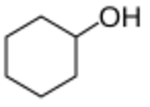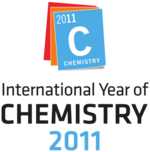International Union of Pure and Applied Chemistry facts for kids
 |
|
 |
|
| Abbreviation | IUPAC |
|---|---|
| Formation | 1919 |
| Type | International non-governmental organization, standards organization |
| Headquarters | Research Triangle Park, North Carolina, United States |
|
Region served
|
Worldwide |
|
Membership
|
International Science Council |
|
Official language
|
English |
|
President
|
|
|
Vice President
|
|
|
Secretary General
|
|
The International Union of Pure and Applied Chemistry (IUPAC) is a worldwide group of chemists. It helps make sure everyone uses the same names and rules for chemicals. Think of it like a global club for science!
IUPAC was started in 1919 to help chemistry grow. Its members are national chemistry groups or science academies from different countries. IUPAC is known for setting the rules for naming chemical elements and chemical compounds. This is called IUPAC nomenclature.
IUPAC also publishes books and helps improve science education. It even helps set the official atomic weights of elements. The main office for IUPAC is in Research Triangle Park, North Carolina, United States.
Contents
How IUPAC Started and Grew
The idea for a worldwide standard in chemistry began in 1860. A group led by German scientist Friedrich August Kekulé von Stradonitz held the first international meeting. They wanted to create a common way to name organic compounds. These early ideas eventually led to the official IUPAC nomenclature of organic chemistry.
IUPAC itself was officially formed in 1919. Since then, it has been in charge of updating and keeping chemical naming rules consistent.
In its early years, Germany was not allowed to join IUPAC. This was because of feelings after World War I. Germany finally joined in 1929. However, during World War II, Germany was again removed. Both East Germany and West Germany were allowed back into IUPAC in 1973. After World War II, IUPAC focused on making science rules the same everywhere.
In 2016, IUPAC spoke out against using chlorine as a chemical weapon. They sent a letter to the group that works to ban chemical weapons. IUPAC said that using chlorine in this way was wrong and worried scientists around the world. They offered to help stop such uses.
How IUPAC Works: Committees
IUPAC is run by several committees. Each committee has different jobs to do. These committees include people from different countries and different chemistry organizations.
Here are some of the important committees and what they do:
- Bureau: This committee makes big decisions about how IUPAC is run. It also manages all the money for IUPAC.
- CHEMRAWN Committee: This group looks at how chemistry can help solve big world problems.
- Committee on Chemistry Education: This committee works to connect IUPAC's research with how chemistry is taught in schools around the world.
- Interdivisional Committee on Terminology: This is a very important committee. It manages all the IUPAC nomenclature rules. They work on projects to make sure chemical names and measurements are the same everywhere.
- Project Committee: This committee helps manage money for different projects. They also decide how to fund meetings in countries that need help.
- Executive Committee: This committee plans IUPAC events and looks at the work of other committees.
IUPAC also has several "Divisions" that focus on different areas of chemistry:
- Physical and Biophysical Chemistry Division: This division helps scientists work together on physical and biological chemistry.
- Inorganic Chemistry Division: This group focuses on inorganic chemicals, isotopes, atomic weights, and the periodic table.
- Organic and Biomolecular Chemistry Division: This division promotes the goals of IUPAC in the field of organic and biological chemistry.
- Polymer Division: This group deals with the science of large molecules called polymers.
- Analytical Chemistry Division: This division focuses on how to analyze chemicals. This includes methods for human health and the environment.
- Chemistry and the Environment Division: This group provides clear information on how chemicals act in food and the environment.
- Chemistry and Human Health Division: This division focuses on chemistry related to medicine and health.
- Chemical Nomenclature and Structure Representation Division: This group creates and updates standard ways to name and show chemical structures.
Naming Chemicals: Nomenclature
IUPAC is famous for creating a clear way to name organic compounds based on their structures. These naming rules help scientists around the world understand each other.
Basic Spelling Rules
IUPAC also sets rules for how some chemical names are spelled. This helps reduce differences in spelling across different English-speaking countries. For example, IUPAC suggests "aluminium" instead of "aluminum." They also recommend "sulfur" instead of "sulphur" and "caesium" instead of "cesium."
Naming Organic Chemicals
IUPAC organic names have three main parts:
- Substituents: These are any groups attached to the main carbon chain.
- Carbon chain length: This is the longest continuous chain of carbon atoms.
- Chemical ending: This part tells you what type of molecule it is. For example, the ending "ane" means it's a single-bonded carbon chain, like in "hexane" (C6H14).
Let's look at cyclohexanol as an example:
- "Cyclo" means it's a ring compound.
- "Hex" means it has six carbon atoms.
- "Ane" means the carbon chain has single bonds.
- "Ol" means it's an alcohol.
- So, "cyclohexanol" tells you it's a six-carbon ring with single bonds and an alcohol group attached.
Naming Inorganic Chemicals
Basic IUPAC inorganic names have two main parts:
- Cation: This is the name for the positively charged ion.
- Anion: This is the name for the negatively charged ion.
For example, in potassium chlorate (KClO3):
Codes for Amino Acids and Nucleotide Bases
IUPAC also has a system for giving short codes to amino acids and nucleotide bases. These codes are useful for writing down long sequences of amino acids, which make up proteins. They help scientists compare these sequences to find similarities.
Nucleotide bases are the building blocks of DNA and RNA. They include adenine, guanine, cytosine, thymine, and uracil. These codes make it much easier to write and read the genetic information of an organism.
| Nucleic acid code | Meaning | Reasoning |
|---|---|---|
| A | A | Adenine |
| C | C | Cytosine |
| G | G | Guanine |
| T | T | Thymine |
| U | U | Uracil |
| R | A or G | Purine |
| Y | C, T or U | Pyrimidines |
| K | G, T or U | Bases that are ketones |
| M | A or C | Bases with amino groups |
| S | C or G | Strong interaction |
| W | A, T, or U | Weak interaction |
| B | Not A (i.e. C, G, T, or U) | B comes after A |
| D | Not C (i.e. A, G, T, or U) | D comes after C |
| H | Not G (i.e., A, C, T, or U) | H comes after G |
| V | Neither T nor U (i.e. A, C, or G) | V comes after U |
| N | A C G T U | Nucleic acid |
| X | Masked | |
| - | Gap of indeterminate length |
Here are the codes for amino acids:
| Amino acid code | Meaning |
|---|---|
| A | Alanine |
| B | Aspartic acid or asparagine |
| C | Cysteine |
| D | Aspartic acid |
| E | Glutamic acid |
| F | Phenylalanine |
| G | Glycine |
| H | Histidine |
| I | Isoleucine |
| K | Lysine |
| L | Leucine |
| M | Methionine |
| N | Asparagine |
| O | Pyrrolysine |
| P | Proline |
| Q | Glutamine |
| R | Arginine |
| S | Serine |
| T | Threonine |
| U | Selenocysteine |
| V | Valine |
| W | Tryptophan |
| Y | Tyrosine |
| Z | Glutamic acid or glutamine |
| J | Leucine or isoleucine |
| X | Any |
| * | Translation stop |
| - | Gap of indeterminate length |
International Year of Chemistry
IUPAC and UNESCO worked together to lead the International Year of Chemistry in 2011. IUPAC first suggested this idea in Italy. UNESCO then agreed to it in 2008.
The main goals of the International Year of Chemistry were to help people understand and appreciate chemistry more. It also aimed to get more young people interested in chemistry. The event celebrated how chemistry has made our lives better in many ways.
IUPAC Presidents
The Presidents of IUPAC are chosen by the IUPAC Council. Here is a list of the Presidents since IUPAC started in 1919:
| Term | President | Nationality |
|---|---|---|
| 1920–1922 | Charles Moureu | |
| 1923–1925 | William Jackson Pope | |
| 1926–1928 | Ernst Julius Cohen | |
| 1928–1934 | Einar Biilman | |
| 1934–1938 | N. Paravano | |
| 1938–1947 | Marston Taylor Bogert | |
| 1947–1951 | Hugo Rudolph Kruyt | |
| 1951–1955 | Arne Tiselius | |
| 1955–1959 | Arthur Stoll | |
| 1959–1963 | William Albert Noyes Jr. | |
| 1963–1965 | Lord Todd | |
| 1965–1967 | Wilhelm Klemm | |
| 1967–1969 | V.N. Kondratiev | |
| 1969–1971 | Albert Lloyd George Rees | |
| 1971–1973 | Jacques Bénard | |
| 1973–1975 | Sir Harold Thompson | |
| 1975–1977 | Robert W. Cairns | |
| 1977–1979 | Georges Smets | |
| 1979–1981 | Heinrich Zollinger | |
| 1981–1983 | Saburo Nagakura | |
| 1983–1985 | William G. Schneider | |
| 1987–1989 | Valentin A. Koptyug | |
| 1989–1991 | Yves P. Jeannin | |
| 1991–1993 | Allen J. Bard | |
| 1993–1995 | Kiril I. Zamaraev | |
| 1996–1997 | Albert E. Fischli | |
| 1998–1999 | Joshua Jortner | |
| 2000–2001 | Alan Hayes | |
| 2002–2003 | Pieter Streicher Steyn | |
| 2004–2005 | Leiv Kristen Sydnes | |
| 2006–2007 | Bryan Henry | |
| 2008–2009 | Jung-Il Jin | |
| 2010–2011 | Nicole J. Moreau | |
| 2012–2013 | Kazuyuki Tatsumi | |
| 2014–2015 | Mark Cesa | |
| 2016–2017 | Natalia Tarasova | |
| 2018–2019 | Zhou Qifeng | |
| 2020–2021 | Christopher M.A. Brett | |
| 2022–2023 | Javier García-Martínez | |
| 2024–2025 | Ehud Keinan |
See also
 In Spanish: Unión Internacional de Química Pura y Aplicada para niños
In Spanish: Unión Internacional de Química Pura y Aplicada para niños
- CAS registry number
- Chemical nomenclature
- Commission on Isotopic Abundances and Atomic Weights
- European Association for Chemical and Molecular Sciences
- International Chemical Identifier (InChI)
- International Union of Biochemistry and Molecular Biology (IUBMB)
- International Union of Pure and Applied Physics (IUPAP)
- List of chemical elements naming controversies
- National Institute of Standards and Technology (NIST)





